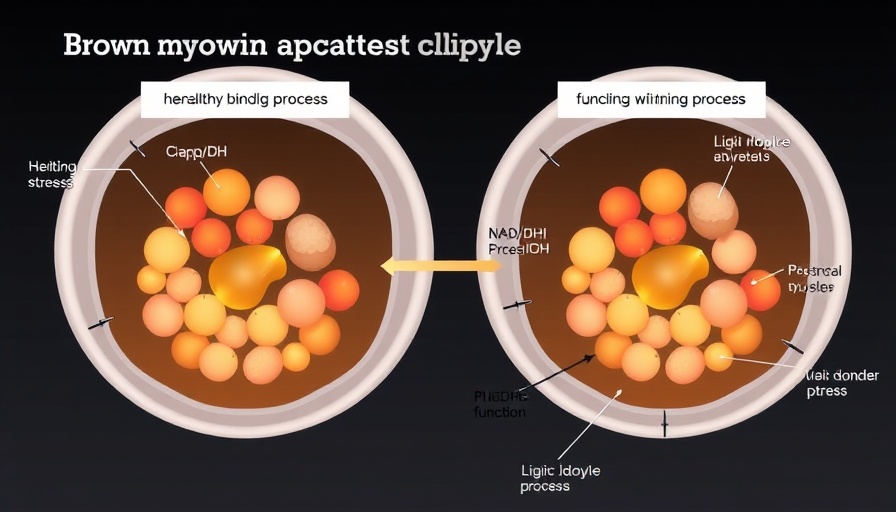
Unraveling the Connection Between Hyperglycemia and Fibroblast Inflammation
Have you ever wondered how a seemingly straightforward issue—like high blood sugar—could lead to a cascade of inflammatory responses in the body? Recent research sheds light on the intricate relationship between glucose metabolism and immune responses, particularly in the context of diabetes. When blood sugar levels rise, so do the levels of a key protein involved in inflammation and tissue repair, known as high-mobility group box 1 (HMGB1). As glucose transporter 1 (GLUT1) ramps up its function to help cells uptake glucose, it also triggers a series of events that could worsen conditions like diabetic wounds by fostering the creation of neutrophil extracellular traps (NETs).
The Role of NETs in Diabetic Complications
So, what exactly are neutrophil extracellular traps? In essence, they are web-like structures produced by neutrophils to capture and kill pathogens. However, in the case of hyperglycemia, these NETs can backfire, contributing to inflammation and tissue damage instead. Research published in Scientific Reports reveals that when hyperglycemic conditions prevail, NETs not only form more readily but they also have detrimental effects on fibroblasts—key players in wound healing. This interplay of cellular strategies unveils a perilous aspect of chronic high blood sugar, which is increasingly relevant as diabetes prevalence rises globally.
How GLUT1 Influences the Inflammation Process
The findings demonstrate that GLUT1 doesn’t just facilitate glucose entry; it plays a pivotal role in modifying HMGB1 through a process called O-GlcNAcylation. This modification stabilizes HMGB1 and amplifies its activity, further driving NET formation and subsequent fibroblast dysfunction. In practical terms, this means that the more ineffective our glucose metabolism becomes, the worse the inflammatory response can be. Essentially, high glucose levels signal GLUT1 to go into overdrive, which could lead to a vicious cycle of inflammation and impaired wound healing.
The Implications of TLR4 in This Process
One of the most fascinating pieces of this puzzle lies with toll-like receptor 4 (TLR4), a crucial element in identifying pathogens and triggering immune responses. The research indicates that blocking TLR4 mitigates the inflammatory havoc caused by the elevated HMGB1. This observation opens up new avenues for therapeutic interventions, suggesting that targeting TLR4 could form a strategy to curb inflammation induced by hyperglycemia. As we navigate the increasingly complex landscape of diabetes research, such specifics bring valuable insights into how we might optimize healing processes hindered by chronic conditions.
Broader Insights for Healthspan Optimization
Understanding these pathways is critical, especially in the context of longevity and cellular health—a primary concern for those investing in healthspan optimization. By recognizing the significance of glucose management and potential anti-inflammatory strategies, health-conscious individuals can adopt lifestyle modifications to mitigate the risks associated with diabetes. The old adage holds true: prevention is always better than cure. From a holistic standpoint, focusing on a balanced diet, regular physical activity, and innovative biohacking techniques can substantially impact our quality of life, keeping inflammatory issues at bay.
A Final Note on Nutrition and Lifestyle
As we continue to unravel the science behind aging and cellular health, this study exemplifies how metabolic factors intertwine with inflammatory responses, underpinning the importance of a proactive approach to health. Enriching your diet with antioxidants, omega-3 fatty acids, and maintaining active living routines can go a long way in fortifying your body's resilience. Remember, addressing one aspect—like blood sugar levels—can set off a chain reaction that influences several facets of health.
Take Action for Your Health: As you navigate your wellness journey, consider adopting comprehensive health strategies that align with the latest scientific insights. Whether it's experimenting with supplements for longevity or fine-tuning your nutritious intake, every small step counts towards an optimized life. Explore how you can implement these insights into your daily routine for lasting benefits!
 Add Row
Add Row  Add
Add 




Write A Comment